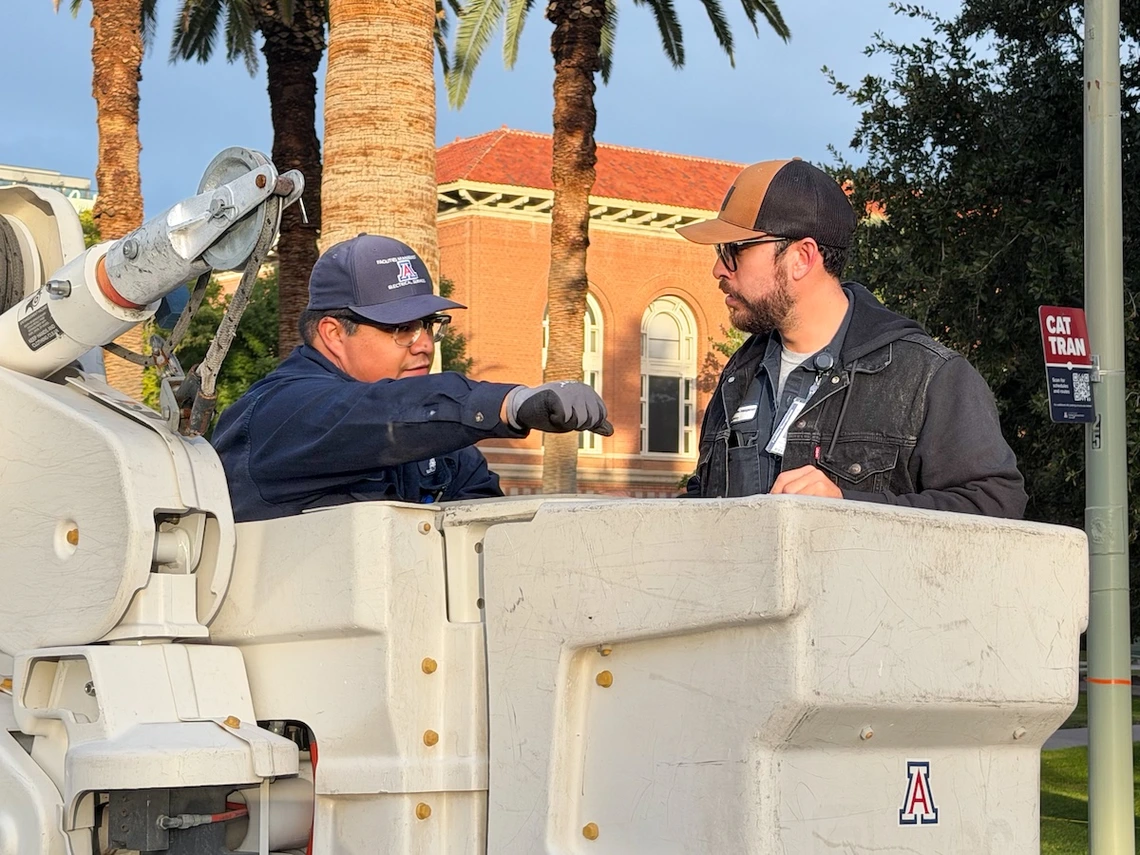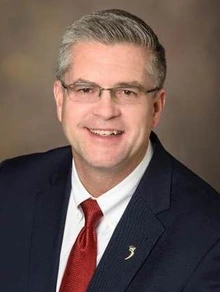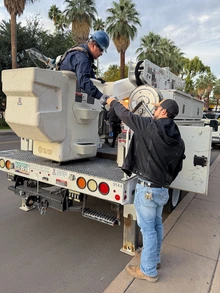University Facilities Apprenticeship Program builds the next generation of skilled trades workers

José Román Aragón (left) and Thomas Mendibles-Escobar work together on a plan to fix a light pole on University Ave. close to Old Main.
Harrison Moreno/University Communications
From electricians who keep research labs powered to plumbers who keep water flowing through century-old pipes, the University of Arizona runs on the expertise of trades workers. But about 12 years ago, Facilities Management began noticing a shift in its workforce. Many long-serving employees were approaching retirement, and there were few qualified individuals with the same level of technical knowledge and customer service experience ready to carry the work forward.

Chris Kopach
"At the time, we looked ahead to the next 10 years, and we saw that 85% of our employees could retire during that time," said Chris Kopach, associate vice president of University Facility Services, which includes Facilities Management and Planning, Design and Construction. "So, we realized we really need to start being able to develop our own staff."
That realization led to the creation of the Facilities Management Apprenticeship Program in 2013. After a brief stoppage, it was recently relaunched, with a new cohort of apprentices scheduled to begin classes in January 2026.
The four-year program provides members of the local community, whether they work for the university or not, an opportunity to pursue a career in a trade. Selected applicants receive thousands of hours of paid on-the-job training working on campus, college credits toward an associate degree through Pima Community College and are eligible for university benefits.
"Our university has it all, from high-tech research labs to buildings with 100-year-old systems," Kopach added. "Having staff who understand how to work with both is just really critical to the university."
A changing workforce landscape
The call for a new generation of workers is part of a broader economic shift that is not only impacting trade jobs, but the entire workforce.
George Hammond, a research professor in the Economic and Business Research Center in the Eller College of Management, says the changing workforce landscape reflects a major demographic transition.

Román Aragón and Mendibles-Escobar both graduated from the apprenticeship program as electricians. Mendibles-Escobar says that those who completed the program together created a bond that continues today as university employees.
Harrison Moreno/University Communications
"One of the true game-changing trends that's happening now is this demographic transition of the aging of the baby boom generation," he explained. "It's going to really put a lot of pressure on businesses to be able to attract and retain the workers that they want. And that's true across the spectrum of occupations."
A tool to revive the industry
The apprenticeship program has helped address the issue while offering a career pathway for individuals outside the traditional four-year degree track.
Jose Rodriguez, who graduated from the program in 2017 and works for the university as a lead plumber, says the program offers an alternative for someone who wants every day to be a new challenge.
"You always need plumbers, HVAC technicians, electricians, and for a while, I didn't feel like people were going towards those professions," he said. "Everything is either going to be automated or working in an office, and that's not for everyone. But for me, every day is different."
Thomas Mendibles-Escobar, an electrician with the university who also completed the program, sees it as a great resource to those looking for a career in the trades and is happy there is more emphasis being put on these career paths.
"It provides a useful tool to help revive those industries," he explained. "A lot of people take trade jobs for granted, and they don't realize that you can make a good living in a trade and get a good education."
Communities investing in training and development for all aspects of the workforce, whether they require a four-year degree, two-year degree, or on-the-job experience, can be crucial to the health of a local economy. According to Hammond and Making Action Possible for Southern Arizona, an informational dashboard with data and analysis of Southern Arizona socio-economic indicators, just over one-third of Arizona's working-age population has a four-year degree. That means the economy depends on jobs that require alternative forms of education and experience.

George Hammond
"It's a key part of the economy. It's really the bulk of the labor force," Hammond says.
More than just a program
The apprenticeship program not only provides education and experience, but also creates a sense of community.
"It's one team working together, whatever position you have, one team working for the betterment of the university," he said. "We say we run the department like a business, but like a family business."
Mendibles-Escobar created a bond with apprenticeship classmates that continues today as university employees.
"All of the electrical apprentices, we would schedule a day to go to school together. We were all there to help each other."
José Román Aragón, another graduate of the program who is now an electrician for the university, said the flexibility offered was crucial to his success.
"They offered self-paced classes, so that helped me a lot because I have a family," he said. "It provided me the leeway of doing my classwork at home so I could take care of my family while doing my classes."
With the relaunch of the Facilities Management Apprenticeship Program, the university continues to invest in the health of the long-term workforce both on campus and in the surrounding community. The program creates a pathway for those who complete it to gain education and experience to prepare the next generation of trade workers at a crucial time in the industry's history.

